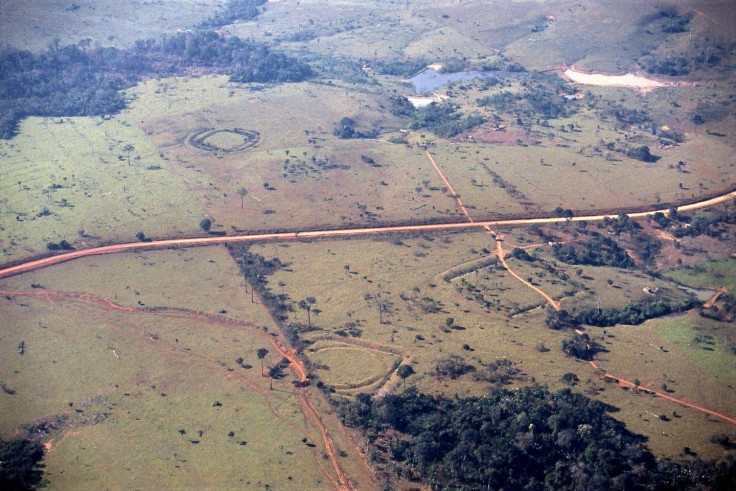How the ancient Amazonians built earthworks to communicate with animals, departed spirits and stars
Enormous squares, octagons and circles dot the landscape between the Amazonian forests.

A beautiful, elaborate series of large earthworks in Brazil acted as doors and pathways for communicating with animals, departed spirits and celestial bodies, an anthropological study has found.
In the indigenous territories of south-west Amazonia, this massive series of ancient geometrical earthworks dominates the landscape. There are thought to be more than 500 geoglyphs in the region, including circular, square, octagonal and U-shaped mounds and trenches. They are up to several metres deep and cover hundreds of square metres.
They were involved in the ceremonies of ancestral indigenous people from about 3,000 years ago, until they fell out of use. Until now, much of what was known about the ancient history of this area had come from ceramics. Ceremonial pottery was found at the sites, with patterns that local people said related to rituals carried out, for example, at the time of puberty.
Working closely with the Apurina and Manchineri indigenous people of the area for 15 years, anthropologist Pirjo Kristiina Virtanen has been piecing together the roles of these structures. Virtanen's findings are published in a study in the journal American Anthropologist.
"What is important here is that the indigenous perspective is key. When we leave behind western ways of thinking of the world we start to see these things differently," Virtanen told IBTimes UK.
"The geoglyphs were related to the changing path of the sun and the path of the moon. In general, this is where people interacted with different non-human beings.
"Certain geometric forms such as the square are also very important in symbolising strength. It really pictures the strength of the people and the connectivity with four different cardinal directions."
Many of the sites were used at different stages of life. People may have returned to them after long absences in some cases, or used them continuously for years at a time.
Even before the colonisation of South America, the geoglyphs were slowly abandoned. Forests grew over many of them, obscuring them from view. It's thought that there could be many more hidden in forested regions that have yet to be discovered.
Newcomers to the area frequently did not respect the geoglyphs, building houses and farms in and around them. Some of the earthworks have been destroyed.
"In some cases, farmers can take a tractor and just move the earth," Virtanen said. "But most of them are still there."
In the protected lands of the Apurina and Manchineri people, the earthworks are still more or less preserved, even if they are not actively used. They have been proposed to join the UNESCO World Heritage List, and are already under some degree of national protection in Brazil.
"We know that the view of ancient Amazonia in general is completely changing. People thought that in Amazonia there were only small hunter-gatherer societies.
"But here is something very atypical. The ancestral people here didn't use stones or other materials, they simply moved the land.
"These are amazing huge landscapes where you see the human history and you see the history of indigenous people played out. There are very important marks of history written in the landscape," Virtanen concluded.
© Copyright IBTimes 2024. All rights reserved.






